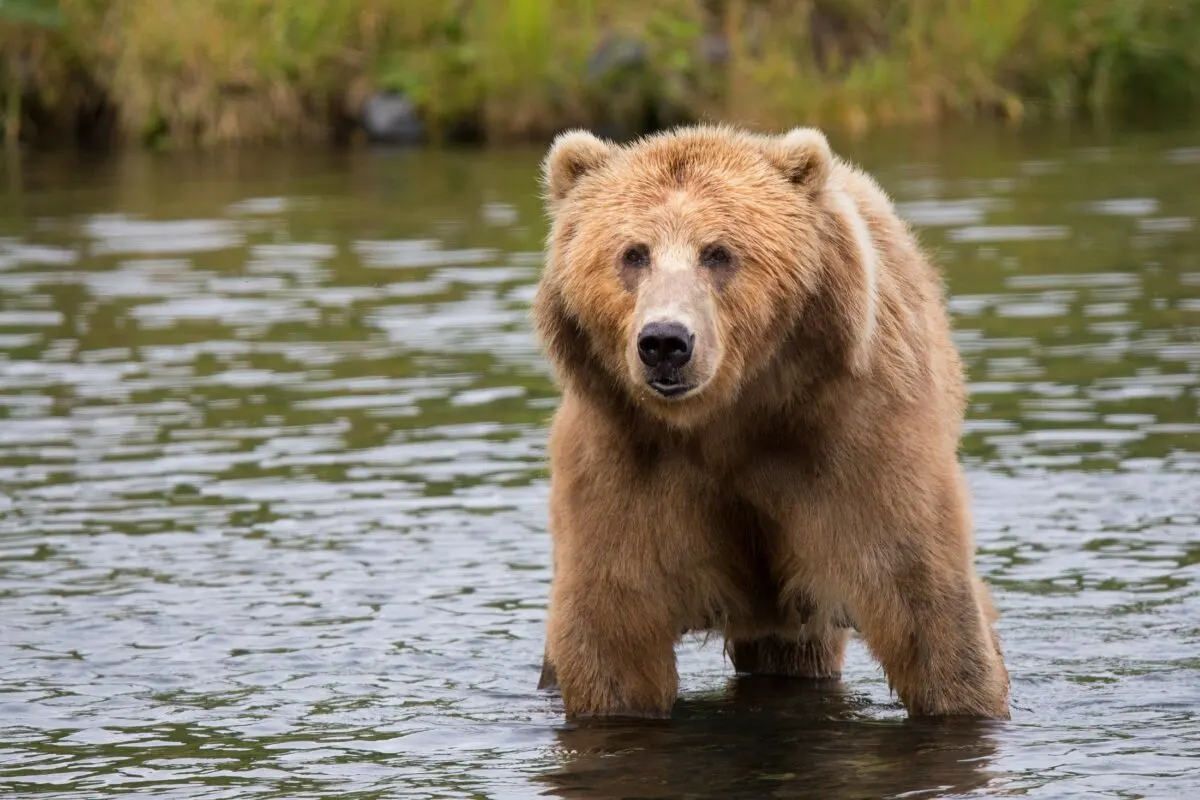When we think of bears, we often imagine powerful apex predators that strike fear into the hearts of hikers and campers. However, the reality is quite different. Despite their impressive size and strength, bears typically avoid human encounters whenever possible. This natural wariness isn’t cowardice—it’s an evolutionary adaptation that has helped bears survive alongside an increasingly dominant human presence. From learned behaviors passed down through generations to instinctive responses triggered by unfamiliar stimuli, bears have developed numerous reasons to keep their distance from humans. Understanding these dynamics not only helps dispel myths about aggressive bear behavior but also provides valuable insights for conservation efforts and human safety in bear country.
14. Bears Have Experienced Generations of Hunting Pressure
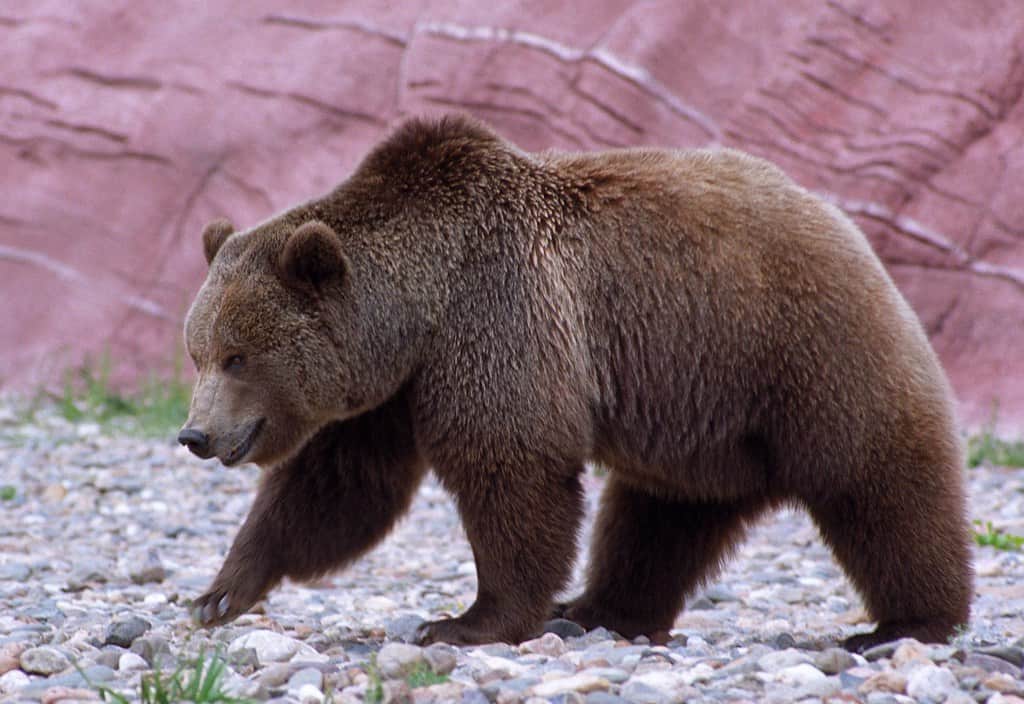
For centuries, bears have been hunted by humans across their natural range. This long history of predation has created a strong evolutionary pressure for bears to avoid human contact. In North America alone, historical hunting reduced some bear populations by more than 90% in the early 20th century before conservation measures were implemented. These experiences have been encoded into bear behavior through natural selection—individuals that feared and avoided humans were more likely to survive and pass on their genes.
This generational learning creates what biologists call “landscape of fear” effects, where animals modify their behavior based on perceived risk. Studies tracking bear movements have shown that they actively avoid areas with high human activity, even when those areas contain abundant food resources. This avoidance behavior is particularly pronounced in regions with active hunting seasons, where bears become exceptionally wary and may shift to nocturnal patterns to minimize human encounters.
13. Bears Are Naturally Cautious and Conflict-Avoidant

Contrary to their fierce reputation, bears are inherently cautious animals that prefer to avoid confrontation. This natural temperament stems from their evolutionary history as solitary animals that typically compete with each other for resources. Unlike pack predators that have evolved to engage in direct confrontation, bears have developed a more risk-averse approach to potential threats. When faced with unfamiliar situations or creatures, their default response is usually to retreat rather than attack.
Wildlife biologists studying bear behavior have documented that bears will go to great lengths to avoid direct confrontation with humans. They often detect humans long before we’re aware of their presence and quietly slip away. This conflict-avoidant nature explains why despite millions of human visitors to bear country each year, actual aggressive encounters remain exceedingly rare. In Yellowstone National Park, for example, visitors have a roughly 1 in 2.7 million chance of being injured by a bear, highlighting how effectively bears avoid human interaction.
12. Human Scent Is Distinctive and Alarming to Bears
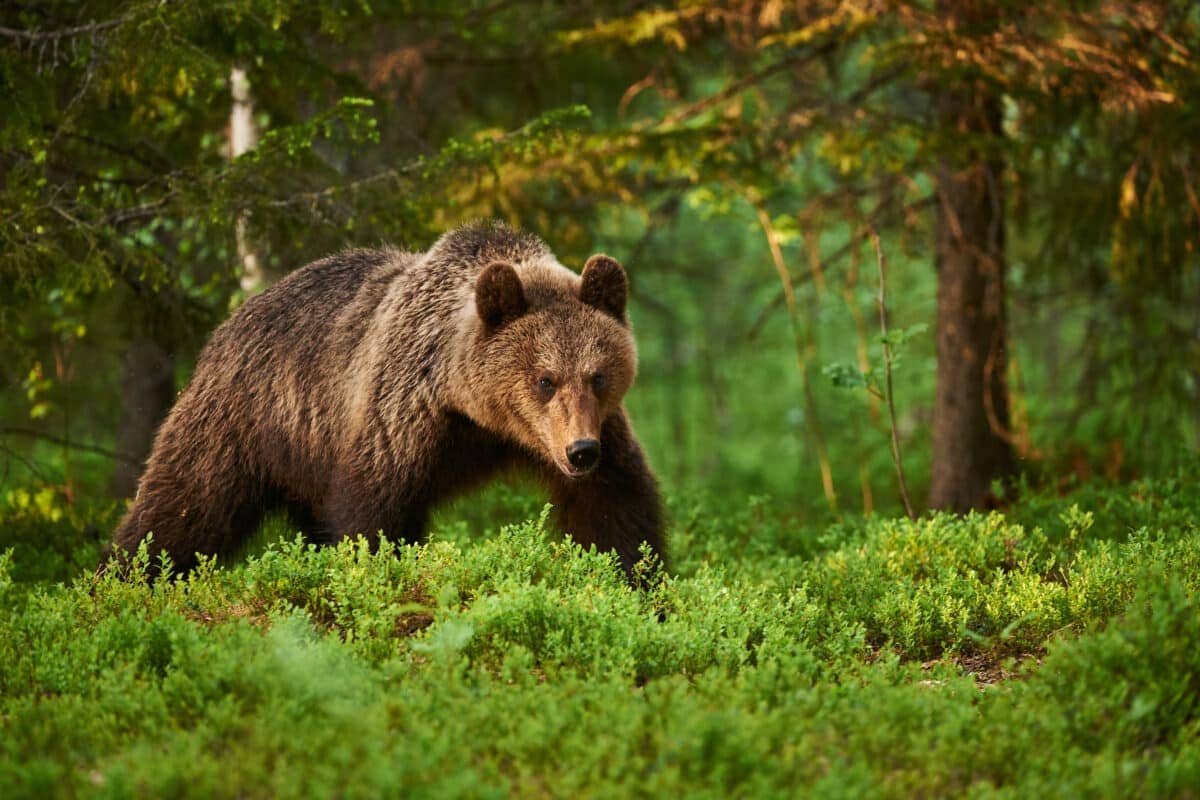
Bears possess an extraordinary sense of smell—approximately seven times more powerful than a bloodhound’s and 2,100 times more sensitive than a human’s. This remarkable olfactory capability allows them to detect human scent from miles away under favorable conditions. Our distinctive odor profile, shaped by everything from synthetic products to the foods we consume, creates an unmistakable signature that bears have learned to associate with potential danger.
Research has demonstrated that bears will often alter their travel routes and feeding patterns upon detecting human scent. In one study conducted in Yellowstone, researchers found that grizzly bears would abandon prime feeding areas after detecting human scent, even when no actual human presence was visible. This powerful reaction to human odor serves as an early warning system that helps bears maintain a safe distance from potential threats, explaining why many hikers can travel through bear country without ever spotting the animals that have already detected and avoided them.
11. Bears Are Startled by Unfamiliar Human Sounds and Activities
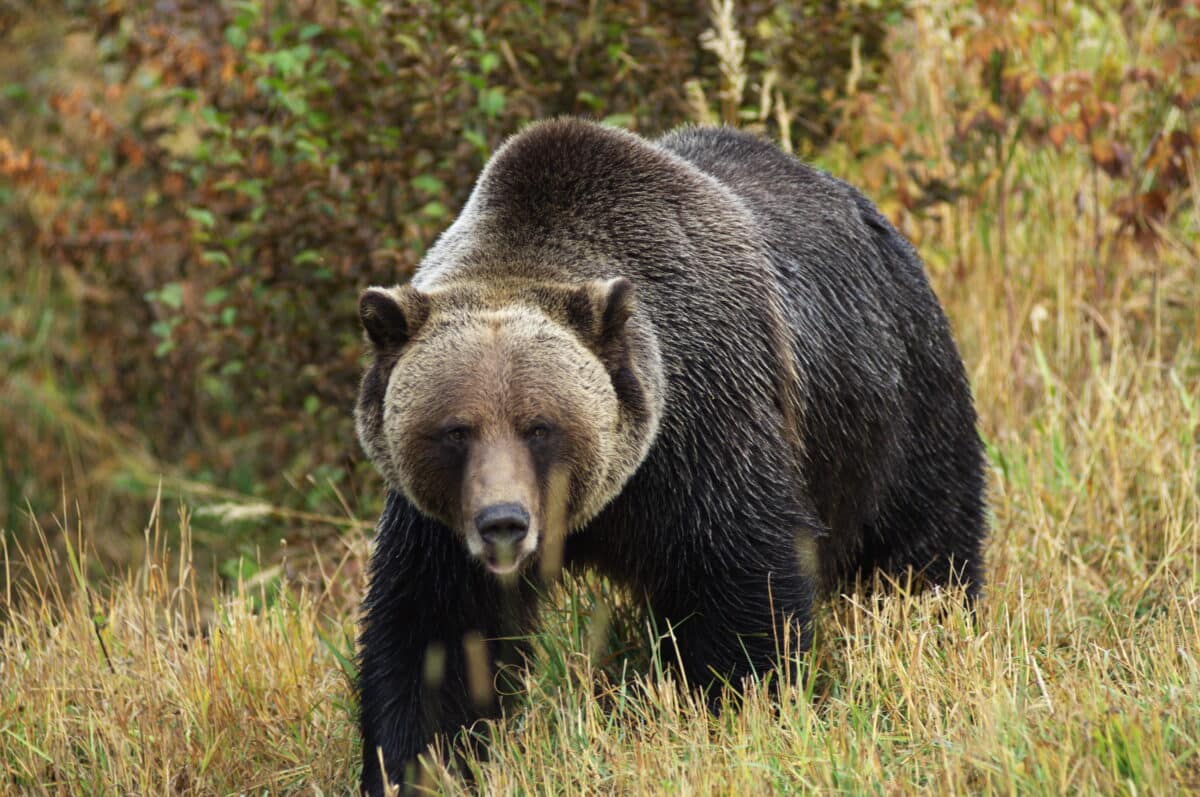
The acoustic landscape of human activity—filled with unfamiliar, loud, and unpredictable sounds—is deeply unsettling to bears. The sudden roar of engines, the sharp crack of branches under hiking boots, human voices, or the unexpected ping of a metal camping pot can trigger an immediate flight response in bears. These sounds represent unfamiliar stimuli that bears haven’t evolved to interpret, creating anxiety and prompting avoidance behaviors.
Scientific studies using motion-triggered cameras have captured bears’ startled reactions to human-generated sounds, showing how they often flee at the first indication of human presence. This sensitivity to acoustic disturbances explains why wildlife management agencies recommend making noise while hiking in bear country—not to threaten bears, but to give them advance warning of human presence so they can avoid an encounter altogether. Bear biologists note that this acoustic sensitivity is particularly pronounced in bears that have had limited exposure to humans, with wilderness bears showing stronger startle responses than those in more developed areas.
10. Human Technology and Equipment Creates Confusion
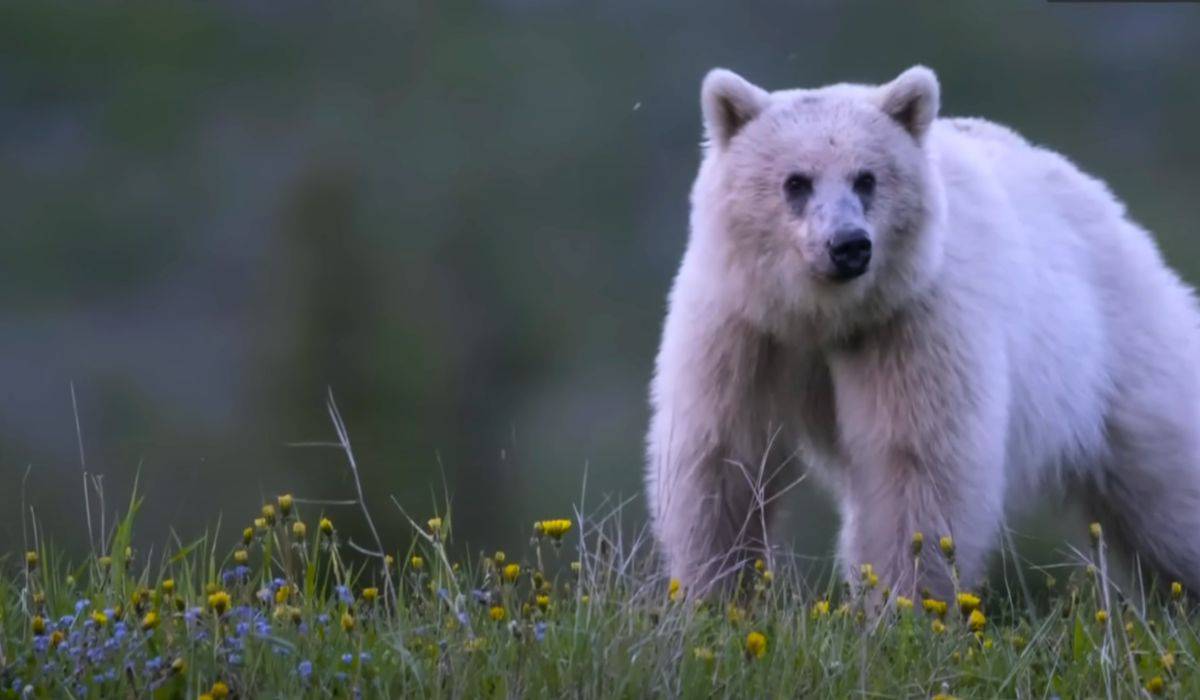
Bears encounter a bewildering array of human technologies and equipment in their habitat—from camping gear and vehicles to the artificial lights and structures that increasingly encroach on wilderness areas. These objects have no evolutionary context for bears and create unpredictable situations that most bears prefer to avoid. Items like tents, backpacks, and camping equipment emit unfamiliar synthetic odors and present strange shapes and textures that can trigger caution or fear responses.
Wildlife researchers have observed that bears frequently circle campsites at a distance, seemingly attempting to process the unfamiliar elements before usually choosing to move away. Trail cameras have captured bears investigating human objects like parked vehicles or unattended equipment, only to startle and retreat when these items make unexpected sounds or movements. This technological confusion represents yet another layer of deterrence that helps maintain separation between bears and humans in shared landscapes. Even simple technologies like electric fences have proven remarkably effective at deterring bears from approaching human settlements.
9. Bears Have Limited Defense Against Firearms
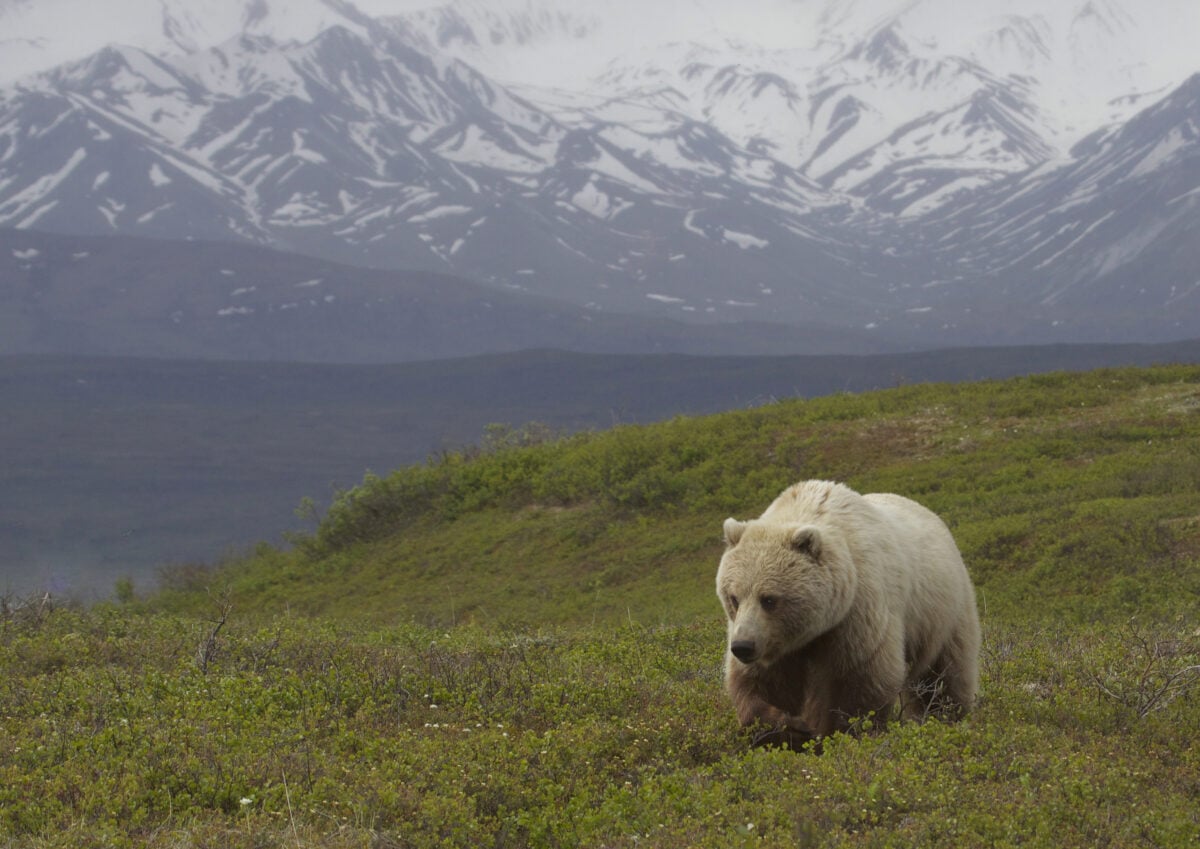
Perhaps the most straightforward reason for bear wariness toward humans is our technological capacity to harm them from a distance. Unlike most natural threats that bears can effectively defend against with their size, strength, and claws, firearms represent an asymmetrical threat that bears have no evolutionary defenses against. While bears may not conceptually understand guns, populations in hunted areas have developed a strong aversion to humans that correlates with hunting pressure.
Comparisons of bear behavior between protected and hunted populations reveal striking differences in human avoidance behaviors. In Alaska’s McNeil River Sanctuary, where bears have been protected for decades, they show markedly less fear of humans than similar brown bears in nearby hunted areas. However, even in protected areas, bears retain a baseline wariness of humans, suggesting both learned and instinctive components to their caution. This fundamental power imbalance has shaped bear-human dynamics across their range, creating a situation where bears that fail to fear humans often don’t survive to pass on their genes.
8. Bears Associate Humans with Negative Conditioning
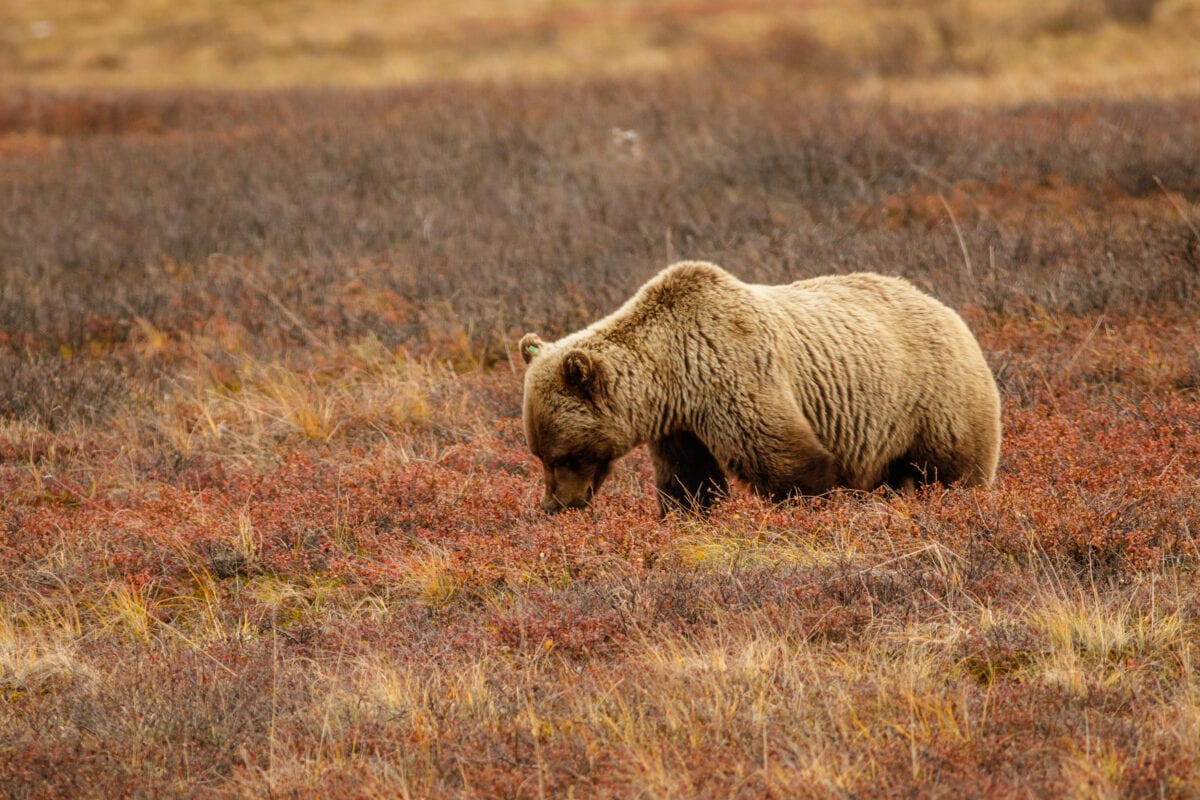
Wildlife management agencies have increasingly employed negative conditioning techniques to reinforce bears’ natural wariness of humans. These methods—which include noise deterrents, rubber bullets, and specially trained dogs—create unpleasant but non-lethal experiences that teach bears to avoid human presence. When a bear encounters humans and experiences these aversive stimuli, it forms a lasting negative association that encourages future avoidance behaviors.
The effectiveness of these conditioning programs has been documented in numerous studies. In Yosemite National Park, a comprehensive aversive conditioning program reduced human-bear incidents by over 70% in treated areas. Bears that undergo these conditioning experiences not only avoid the specific locations where they occurred but often develop a broader wariness of human scent and activity. Wildlife managers note that these techniques work precisely because they tap into bears’ natural tendency to avoid negative experiences and potential threats, reinforcing rather than creating their innate caution toward humans.
7. Bears Have Limited Experience with Human Intentions

Bears operate in a world of instinct and learned experience, without the capacity to understand human intentions. This fundamental inability to distinguish between a harmless photographer and a potential threat creates a default setting of caution. From a bear’s perspective, unpredictable humans might represent anything from a lethal threat to a neutral presence, and without the cognitive tools to differentiate these possibilities, the safest strategy is avoidance.
This cognitive limitation explains why bears sometimes display seemingly contradictory behaviors—fleeing from harmless hikers while occasionally approaching dangerous situations like highways or human structures. Bears make decisions based on their limited framework of understanding, which primarily consists of past experiences and instinctive responses rather than nuanced assessments of human intent. Conservation psychologists point out that this gap in interspecies understanding creates an asymmetrical relationship: humans can learn to interpret bear behavior and intentions, but bears cannot reciprocate this level of cross-species comprehension, leaving them to err on the side of caution in most human encounters.
6. Bears Recognize Humans as Competitors for Resources

Bears possess remarkable ecological intelligence and recognize humans as competitors for key resources like food, water, and territory. As opportunistic omnivores, bears are particularly sensitive to food competition. They’ve observed humans harvesting wild foods like berries and fish, occupying prime habitat, and controlling access to resources through development and recreational activities. This resource competition creates another dimension of wariness as bears learn to associate human presence with reduced access to essential survival resources.
Research tracking bear movements around popular fishing spots, berry patches, and hunting areas shows that bears often adjust their feeding schedules to avoid peak human usage times. In Alaska’s salmon streams, studies have documented bears shifting to nocturnal fishing when human anglers are present during the day. This competitive awareness creates a practical reason for bears to maintain distance from humans beyond pure fear—they’ve learned that human presence often correlates with increased effort to secure food and other resources. Even in protected areas where bears aren’t hunted, this resource competition continues to influence bear behavior and movement patterns.
5. Bears Learn from Observing Other Bears’ Reactions

Bears are capable of social learning, including observing and mimicking the behaviors of other bears. This capacity allows fear responses toward humans to spread through bear populations even when most individuals have never had direct negative experiences with people. Cubs learn human avoidance behaviors by watching their mothers’ reactions, and adult bears can pick up behavioral cues from other bears they encounter. This social transmission of caution creates a multiplier effect where relatively few negative human-bear interactions can influence the behavior of entire bear populations.
Wildlife ethologists have documented this phenomenon through field observations and camera studies showing how bears monitor and respond to the alarm behaviors of other bears. In one notable study in British Columbia, researchers found that bears that had never encountered humans directly still displayed strong avoidance behaviors consistent with those shown by experienced bears in the same area. This social learning explains why bear wariness persists even in areas where direct negative conditioning or hunting hasn’t occurred for generations—the behavior becomes culturally transmitted through bear populations as an essential survival strategy.
4. Human Habitats Appear Dangerous and Exposed

Bears have evolved to feel secure in forested environments with ample cover and escape routes. In contrast, human settlements and recreation areas often feature wide-open spaces, artificial lighting, and limited protective cover—environmental features that create an innate sense of vulnerability for bears. The typical human environment lacks the security features bears instinctively seek, making these areas inherently stressful and undesirable from a bear’s perspective.
Habitat preference studies using GPS collar data show that bears consistently select travel routes with maximum cover when moving near human developments. They strongly prefer dense vegetation and avoid crossing open areas during daylight hours. This inherent discomfort in exposed environments creates a natural buffer zone around human developments that most bears choose not to cross unless extreme circumstances (like food scarcity) override their natural caution. Conservation planners now incorporate this understanding into wildlife corridor design, ensuring that bears have access to sufficiently forested pathways when their ranges overlap with human activity zones.
3. Bears Have Evolved to Recognize Predator Dynamics

Throughout their evolutionary history, bears have developed sophisticated threat-recognition systems that help them identify and avoid potential predators. While adult bears have few natural predators, they’ve evolved to recognize certain behavioral and ecological patterns that signal danger. Humans, particularly in groups, trigger many of these ancient warning systems. Our upright posture, direct approach behaviors, tendency to travel in groups, and dominant territorial behaviors all align with predator patterns that bears are evolutionarily programmed to avoid.
Biologists studying predator recognition in mammals have identified specific behavioral triggers that create instinctive wariness, many of which humans inadvertently display. Direct eye contact, frontal approaches, loud vocalizations, and coordinated group movements all signal potential threats in the animal world. Humans frequently exhibit these behaviors during outdoor recreation, unknowingly broadcasting predator cues that trigger bears’ avoidance instincts. This explains why even bears in protected areas with no hunting history still maintain a baseline wariness around humans—we unintentionally display the behavioral hallmarks of creatures to be avoided.
2. Human Population Growth Creates Increasing Pressure

The expanding human footprint has dramatically altered bear habitat across North America, Europe, and Asia. As human populations grow and developments push further into wilderness areas, bears experience increasing pressure from habitat fragmentation, traffic, noise pollution, and human activity. This escalating presence creates cumulative stress that reinforces bears’ tendency to avoid areas of human concentration. Satellite imagery analysis shows that bear habitat has contracted significantly over the past century, with bears increasingly restricted to areas with minimal human development.
Conservation biologists studying this phenomenon have documented how bears adjust their behavior in response to human density gradients. In regions with higher human populations, bears typically become more nocturnal, travel greater distances to avoid human infrastructure, and show heightened stress responses when humans are detected. These behavioral adaptations represent survival strategies in an increasingly human-dominated landscape. The most successful bears in these environments are those that have developed sophisticated avoidance behaviors, creating evolutionary pressure that continues to select for human wariness in remaining bear populations.
1. Bears Experience Direct Harassment from Humans

Beyond hunting, bears encounter various forms of direct harassment from humans that reinforce their wariness. These negative interactions include being chased by vehicles, harassed by off-leash dogs, subjected to noise harassment from recreationists, and deliberately frightened by people attempting to drive them away from properties or campsites. Each of these experiences creates powerful negative associations with humans that can last a bear’s lifetime and influence its future behavior around people.
Wildlife conflict specialists have documented how even seemingly minor harassment incidents can create lasting behavioral changes in bears. For example, a bear chased by a vehicle may subsequently avoid roads altogether, or one frightened by campers may develop a permanent aversion to the sounds of human voices. These experiences are particularly impactful because they often involve high-stress situations where the bear feels threatened without a clear escape route. The cumulative effect of these interactions across bear populations creates a widespread pattern of human avoidance that persists even in areas where bears receive legal protection.
Conclusion: Understanding Bear Avoidance Behaviors

The complex reasons behind bears’ wariness of humans reflect a sophisticated interplay of evolutionary history, learned experiences, and adaptive responses to changing environments. From their powerful sensory capabilities that detect humans long before we’re aware of their presence to the generational learning passed down from mother to cubs, bears have developed multiple overlapping systems that encourage human avoidance. This natural caution serves as their primary survival strategy in an increasingly human-dominated world and explains why bear attacks remain extraordinarily rare despite increasing overlap between bear and human territories.
Understanding these dynamics has important implications for both bear conservation and human safety. By recognizing that fear is bears’ default response to humans rather than aggression, we can develop more effective management strategies that work with rather than against bears’ natural behaviors. For hikers and outdoor enthusiasts, this knowledge reinforces the importance of making noise in bear country—not to intimidate bears, but to allow them to detect and avoid human presence. For conservation efforts, it highlights the need to maintain sufficiently large and connected habitat areas where bears can successfully avoid human contact while meeting their survival needs.
Perhaps most importantly, this understanding challenges popular misconceptions about bear behavior that often portray these animals as aggressive threats. In reality, the vast majority of bears go to extraordinary lengths to avoid human encounters, with their sophisticated avoidance behaviors largely invisible to the humans they’re avoiding. By respecting bears’ desire for distance and designing human activities to accommodate their natural wariness, we can create coexistence strategies that benefit both species. The fear that bears show toward humans isn’t a weakness—it’s a sophisticated adaptive response that has allowed these remarkable animals to survive alongside the most dominant predator Earth has ever known.
- 14 Creatures That Can Freeze and Thaw Back to Life - August 9, 2025
- 10 Animals That Risked Their Lives to Save Humans - August 9, 2025
- 14 Reasons Why Bears Are Afraid of Humans (Most of the Time) - August 9, 2025

